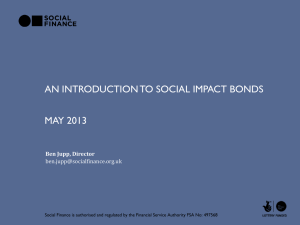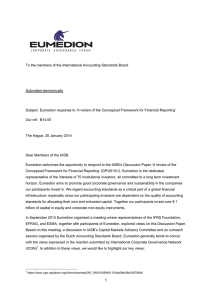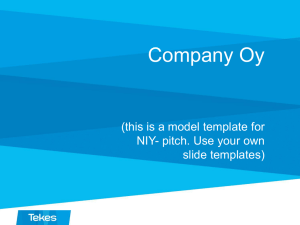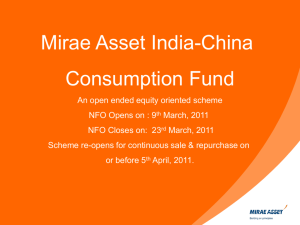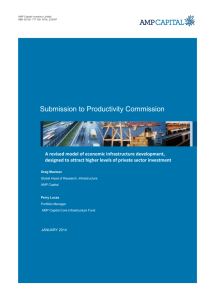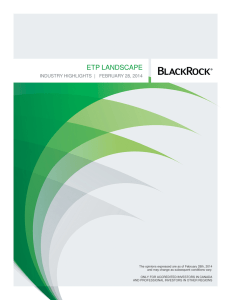Foreign Direct Investment: How to Attract It, How to Benefit?
advertisement
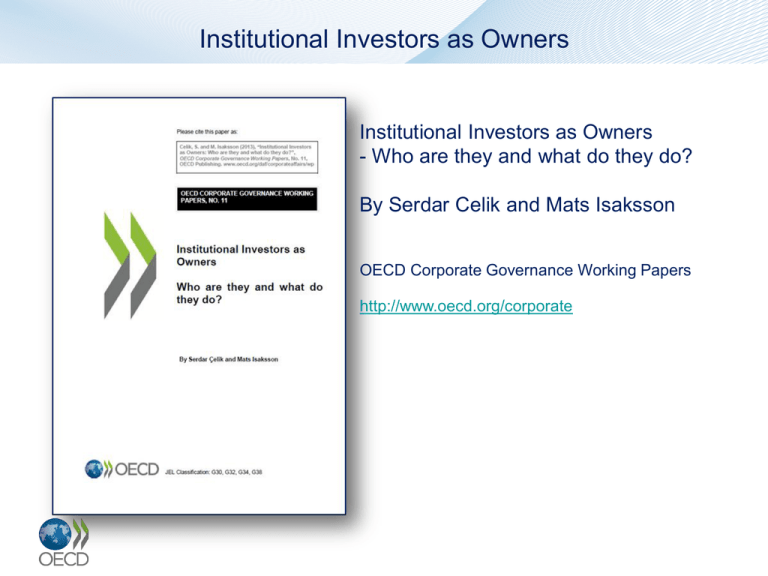
Institutional Investors as Owners Institutional Investors as Owners - Who are they and what do they do? By Serdar Celik and Mats Isaksson OECD Corporate Governance Working Papers http://www.oecd.org/corporate • Institutional Investors have more than doubled their assets under management in the last decade. • 85 trillion in AUM • 32 trillion in public equity MANY DIFFERENT ANIMALS Institutional Investors Traditional Institutional Investors Alternative Institutional Investors Asset Managers Pension funds Sovereign wealth funds Independent asset managers Investment funds Private equity Asset management arms Insurance companies Hedge funds Exchange traded funds • Other categories: closed-end investment companies, proprietary trading desks of investment banks, foundations and endowments could be added. Their Equity Holdings Total assets under management and allocation to public equity by different types of institutional investors. Source: OECD Institutional Investors Database, SWF Institute, IMF, Preqin, BlackRock, McKinsey Global Institute • Concerns about the accuracy of estimations in the data. • The combined holdings of all institutional investors; USD 84.8 trillion in 2011. • Traditional institutional investors; USD 73.4 trillion (USD 28 trillion in public equity). • Alternative institutional investors; USD 11.4 trillion (USD 4.6 trillion in public equity). Complexity – The CalPERS Case Source: CalPERS Comprehensive Annual Financial Report, Financial Year Ended June 30, 2012 and CalPERs Annual Investment Report, Financial Year Ended June 30, 2012, SO WHO “OWNS” WHAT? Source: IMF, Global Financial Stability Report, April 2012 • Increase in outsourcing of asset management to external asset managers. Globally, asset management firms are estimated to have had about USD 63 trillion in 2011. • Some of the asset managers are themselves traditional or alternative institutional investors. Asset management arms of insurance companies. The discussion about ownership engagement has two main sources of origin • 1. Legal (to meet fiduciary duties) • 2. Economic (to improve capital allocation and monitor corporate performance) The discussion about ownership engagement has two sources of origin • 1. Legal (to meet fiduciary duties) • 2. Economic (to improve capital allocation and monitor corporate performance) The Public Policy Perspective • A market economy relies on the self- interest of shareholders for efficient capital allocation and monitoring of corporate perfomance • That is why the equity instrument carries certain rights, for example to vote on major changes and the board. • And in public markets – are transferable (exit). Ownership Engagement is Expensive • Some shareholders are willing to carry these costs. • Others are not. • Why? Determinants of ownership engagement Levels of ownership engagement • No engagement: Do not monitor individual investee companies actively, do not vote their shares and do not engage in any dialogue with the management of investee companies. • Reactive engagement: Voting practices that are primarily based on a set of generic, pre-defined criteria. Relies on buying advice and voting services from external providers such as proxy advisors. Reactions to engagement by other shareholders. • Alpha engagement: To capture short or long-term returns above market benchmarks. • Inside engagement: Characterized by fundamental corporate analysis, direct voting of shares and often assuming board responsibilities. Typically hold controlling or large stakes in the company. No engagement and alpha engagement Corporate governance taxonomy of institutional investors Some Food For Thought • Incentives for ownership engagement is not a function of share ownership itself. They result from the business model and are beyond the reach of public policy. • No use talking about institutional investors as one group • Legal and regulatory requirements to engage may have little – or perhaps even negative effect – on capital allocation and corporate performance. • Owners with the highest degree of engagement typically have no regulatory obligations to “engage”. • The public policy question is: How do we make sure that they are compensated? Thank you for your attention!




